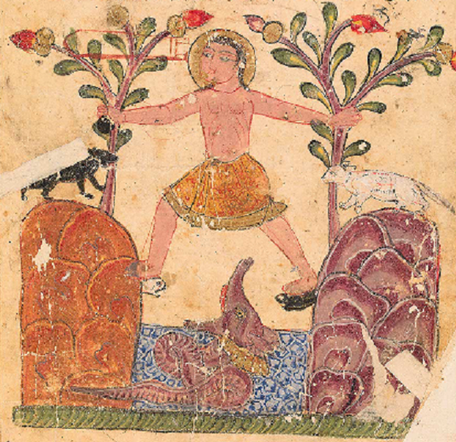Scripture as Frame in Naṣr Allāh Munshī’s "Kalīla and Dimna"
DOI:
https://doi.org/10.5617/jais.10125Abstract
This is a study of the narrative framing structure found in the Persian translation of Kalīla and Dimna written by Naṣr Allāh Munshī in the sixth/twelfth century. Kalīla and Dimna is famous partly for its embedded narratives—i.e., the phenomenon whereby characters within the book are the ones who tell the stories. This system of nested narrative frames gains a new dimension in the rendition of Naṣr Allāh, whose project involves (inter alia) presenting Kalīla and Dimna as a book of practical wisdom in an explicitly Islamic context. Naṣr Allāh has added a substantial new preface, which argues for the importance of Kalīla and Dimna in instructing people—especially rulers—in the values of justice and sound governance. He links these ideas to Islamic ethics by quoting extensively from Qur’ānic verses and ḥadīth. But this is not only a feature of the preface: the body chapters of the book, the fables themselves, are also enriched with religiously inflected arguments and scriptural quotes (not to mention lines of poetry). The style is reminiscent of that of Arabic adab works—with which Naṣr Allāh was obviously familiar. While there are several fascinating aspects of Naṣr Allāh’s version of Kalīla and Dimna, the goal of this article is to shed light on the interventions that have been made to the framing structure of the stories.
Key words: Kalīla and Dimna, Persian literature, translation, Qur’ān, ḥadīth
Downloads
Published
How to Cite
Issue
Section
License
For content published in editions of JAIS before 2002, copyright belongs to the author. Content published between 2002 and 2017 is copyrighted by Edinburgh University Press (reproduced on FRITT with permission). Text and other material published in these journal volumes can only be shared and republished with written permission from the rights holders.
Starting from 2017, the content published in JAIS is - unless otherwise is stated - licensed through Creative Commons License Attribution 4.0: https://creativecommons.org/licenses/by/4.0/. Through this licence content can be copied and distributed but also remixed, transformed and built upon for any purpose under the following conditions:
Attribution — You must give appropriate credit to the creators of materials published in JAIS, provide a link to the license, and indicate if changes were made. You may do so in any reasonable manner, but not in any way that suggests the licensor endorses you or your use.
No additional restrictions — You may not apply legal terms or technological measures that legally restrict others from doing anything the license permits.
Notice: No warranties are given. The license may not give you all of the permissions necessary for your intended use. For example, other rights such as publicity, privacy, or moral rights may limit how you use the material.
Authors who publish in JAIS accept the following conditions:
Author(s) retains copyright to the article and give JAIS right to first publication while the article is licensed under the Creative Commons CC BY 4.0. This license allows sharing the article for non-commercial purposes, as long as the author and first publishing place JAIS are credited. The license does not allow others to publish adapted versions of the article without the author's permission.
The author is free to publish and distribute the work/article after publication in JAIS, as long as the journal is referred to as the first place of publication. Submissions that are under consideration for publication or accepted for publication in JAIS cannot simultaneously be under consideration for publication in other journals, anthologies, monographs or the like. By submitting contributions, the author accepts that the contribution is published in both digital and printed editions of JAIS.



